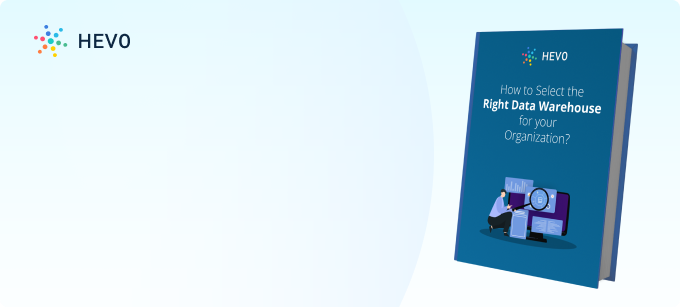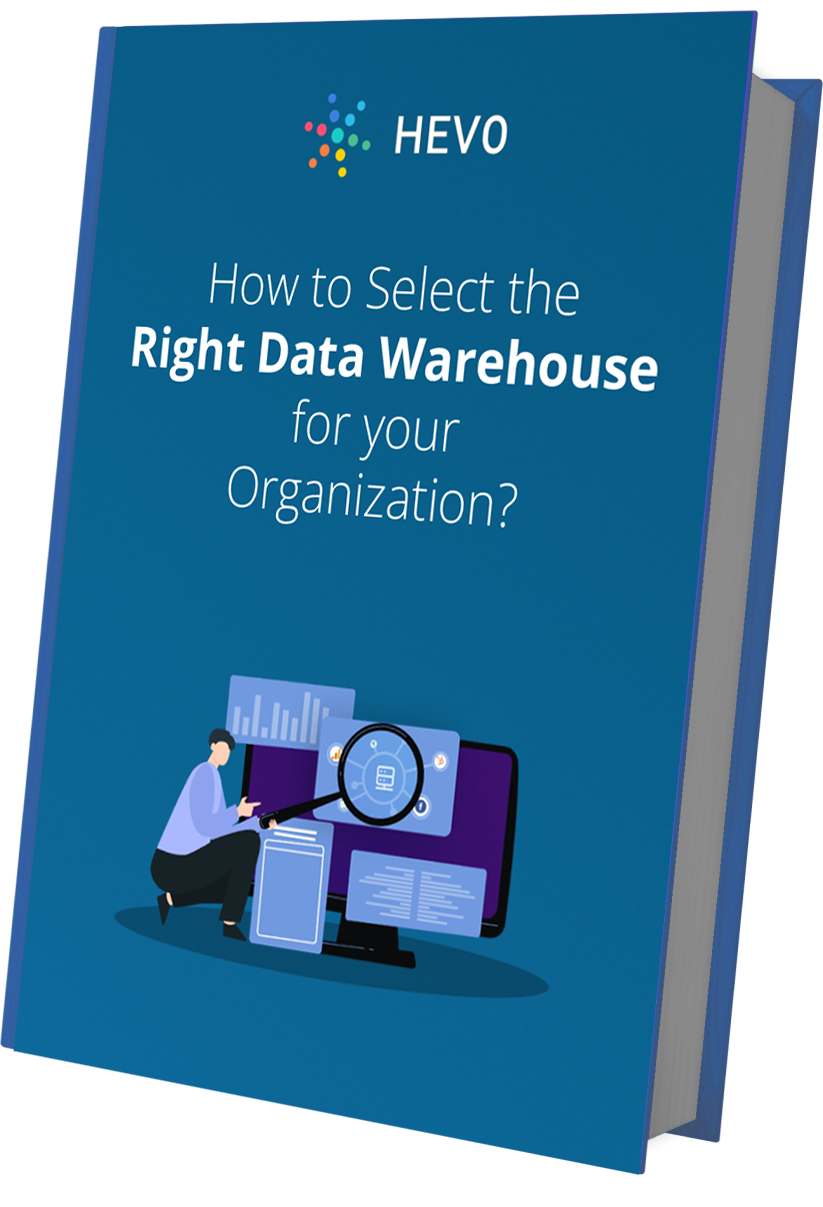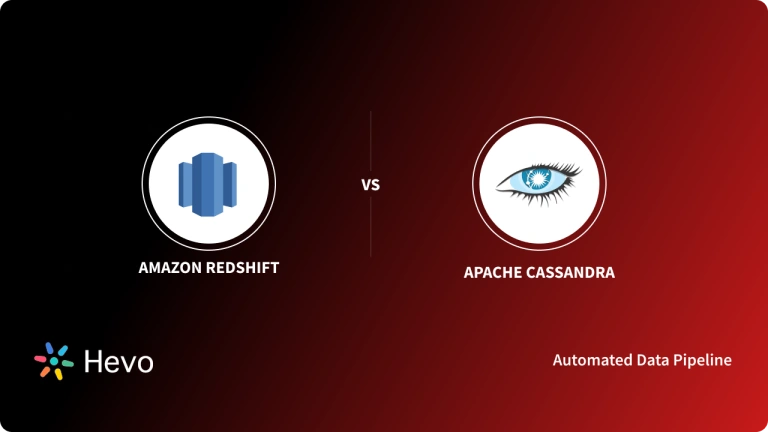The volume of data being collected by most businesses in today’s world has increased exponentially over the past few years. This is simply due to the fact that businesses are relying on data-driven decision-making more than ever before. Considering the volume of data being collected now, it is impossible for the Traditional Relational Database to continue satisfying those data storage requirements. This is primarily due to the inability of Relational Databases to scale horizontally and handle Unstructured Data.
Hence, most businesses today that are handling large volumes of data are moving to NoSQL Database solutions which are designed to handle large amounts of data keeping the Big Data requirements of most businesses in mind. Some of the most popular NoSQL Databases are MongoDB, Apache Cassandra, Oracle NoSQL Database, Apache HBase, etc. There are various factors that can help you decide which NoSQL Database would be best for your business and data requirements.
This article will provide you with an in-depth understanding of the various factors that drive the Apache Cassandra vs MongoDB decision allowing you to understand which would be suitable for your business.
Effortlessly manage and migrate your MongoDB data with Hevo. Hevo supports MongoDB as one of its 150+ data sources, ensuring seamless data integration and real-time synchronization.
- No-Code Solution: Easily connect and manage your MongoDB data without writing a single line of code.
- Flexible Transformations: Use drag-and-drop tools or custom scripts for data transformation.
- Real-Time Sync: Keep your destination data warehouse updated in real time.
- Auto-Schema Mapping: Automatically handle schema mapping for a smooth data transfer.
Join over 2000 satisfied customers, including companies like Voiceflow and Playtomic, who trust Hevo for their data integration needs. Check out why Hevo is rated 4.7 stars on Capterra.
Get Started with Hevo for FreeTable of Contents
Introduction to Apache Cassandra
Apache Cassandra is a free and Open-Source NoSQL Database. It implements a Columnar Storage Architecture and can handle large volumes of data distributed across multiple Apache Cassandra nodes. Every node in Apache Cassandra is capable of performing read and write operations. Because of this, data can be replicated across multiple nodes to provide availability in case of node failure. If a node failure occurs, the user is redirected to the nearest available node having the required data. Hence, it can be observed that Apache Cassandra does not have a single point of failure and can thus provide high data availability. This is considered to be one of the most significant advantages of using Apache Cassandra.
Another advantage of using Apache Cassandra is its query language. It uses Cassandra Query Language (CQL) to access data which has a syntax that is very similar to Structured Query Language (SQL). Due to its similarity with SQL, most developers are easily able to switch to Apache Cassandra.
Introduction to MongoDB
MongoDB is an Open-Source and a leading NoSQL Database. MongoDB stores data in a form that is similar to JSON, i.e., as Key-Value pairs in a Document. Each Document is considered to be a part of a Collection. MongoDB being a NoSQL Database offers Distributed Storage, Horizontal Scaling, and High Availability.
More information about MongoDB can be found here.
Key Factors that Drive the Apache Cassandra vs MongoDB Decision
The various factors that drive the Apache Cassandra vs MongoDB decision are as follows:
1) Apache Cassandra vs MongoDB: Data Model
Apache Cassandra implements a Columnar Storage Architecture and stores data in the form of traditional rows and columns. Each column has a specific data type that it can store that has to be specified at the time of table creation. A sample table in Apache Cassandra is as follows:
MongoDB on the other hand stores data in a JSON-like format in Documents that are stored in a Collection. This means that the structure of data to be stored can be changed for each record and does not require it to be in a pre-defined format. Storage in a JSON-like format also allows data to be nested to allow the record to be more data-rich and expressive. A sample Document in MongoDB is as follows:
So if the data you’re trying to store has a fixed format that is not expected to change much, Apache Cassandra would be suitable for you but if your requirements include more dynamic data that does not have a predefined structure, MongoDB would be more suitable.

2) Apache Cassandra vs MongoDB: Availability
MongoDB has a single Master Node controlling multiple Slave Nodes. If the Master Node goes down, an automatic election process starts at the end of which one of the Slave Nodes is elected to become the Master Node. This process can take up to a minute to complete and the database would not respond to any requests in the absence of a Master Node. Hence, even though MongoDB has high availability, it cannot guarantee 100% data availability.
Apache Cassandra on the other hand has multiple Master Nodes inside a cluster. This means that if one of the Master Nodes goes down, there is no downtime since other active Master Nodes can handle the incoming requests. Because of this architecture, Apache Cassandra can guarantee 100% availability for writes.
So if your business and data requirements need 100% data availability, Apache Cassandra would be more suitable, and if some small amount of downtime can be tolerated without major repercussions, MongoDB would be suitable.
3) Apache Cassandra vs MongoDB: Scalability
Distributed Databases only allow Master Node to perform write operations and Slaves Nodes to only perform read operations.
Since MongoDB has a single Master Node, it can only perform only one write operation at a time and hence can be considered to be limited in terms of writing Scalability. On the other hand, Apache Cassandra having multiple Master Nodes can coordinate multiple write operations at the same time.
Hence, if write Scalability is an important factor for your business, Apache Cassandra should be preferred.
4) Apache Cassandra vs MongoDB: Query Language
Apache Cassandra supports a query language called the Cassandra Query Language (CQL) whereas MongoDB does not have support for any query language and can only structure queries in JSON fragments.
A sample query to insert a record into an Apache Cassandra table is as follows:
INSERT INTO employee
(empid, firstname, lastname, gender)
VALUES
('1', 'FN', 'LN', 'M')The same query in MongoDB will have an implementation as follows:
db.employee.insert(
{
empid: '1',
firstname: 'FN',
lastname: 'LN',
gender: 'M'
}
)If support for a query language is required, Apache Cassandra should be preferred over MongoDB. Apache Cassandra’s CQL also has a structure very similar to Structured Query Language (SQL). So if your business has a team that is already proficient in SQL, Apache Cassandra would be the best choice for you.
5) Apache Cassandra vs MongoDB: Aggregations
MongoDB has its own in-built aggregations framework that allows users to run an ETL pipeline that can perform required aggregations on the data.
Apache Cassandra does not have an in-built aggregations framework. If data stored in Apache Cassandra has to be aggregated, external tools like Apache Hadoop or Apache Spark are required.
So depending on the qualifications of the engineering team in your business, either Apache Cassandra or MongoDB can be chosen.
6) Apache Cassandra vs MongoDB: Secondary Index
MongoDB is known for its offering of high-quality secondary indexes. Due to its flexible Data Model along with its high-quality secondary indexes, MongoDB can fetch any value from the stored object even if it is nested.
Apache Cassandra only offers cursor support for secondary indexes which are limited to single columns and equality operations.
Hence, the choice between the two depends on how you plan on querying the data. If the required data can be accessed using a single Primary Key, Apache Cassandra would be suitable but if more complex queries to extract specific values in dynamic data is required, MongoDB should be preferred.
7) Apache Cassandra vs MongoDB: Support for Programming Languages
The programming languages supported by MongoDB are Actionscript, C, C#, C++, Clojure, Erlang, Go, Groovy, Haskell, Java, JavaScript, Lisp, Lua, MatLab, Perl, PHP, PowerShell, Ruby, Scala, Smalltalk, ColdFusion, D, Dart, Delphi, Prolog, Python, R.
The programming languages supported by Apache Cassandra are C#, Erlang, Go, Haskell, Java, JavaScript, Perl, Ruby, Scala, C++, Clojure, PHP, Python.
Even though Apache Cassandra supports a comparatively lesser number of programming languages, the final decision depends on the programming languages the applications of your business are written in or will be written in.
8) Apache Cassandra vs MongoDB: Pricing
Apache Cassandra is free for all users. The users only have to pay for the Data Warehouse that will be used to store the data. So the final pricing for Apache Cassandra depends on the Data Warehousing solution being used by the business.
MongoDB offers 3 pricing plans based on the business requirements. These plans are as follows:
Cloud Database as a Service
This plan offers a Cloud Data Storage solution fully managed by MongoDB. It further offers 3 tiers which are as follows:
- Shared Clusters: Mostly used for learning purposes and not suitable for businesses. This tier offers 512MB free storage following which the user has to start paying.
- Dedicated Clusters: Mostly used by businesses that offer services only in a specific region.
- Dedicated Multi-Region Clusters: Used by businesses that offer services in multiple regions across the world.
The pricing for each of these tiers is as follows:
On-Premises or Private Cloud Solutions
This plan is offered for those businesses that do not wish to use MongoDB’s Cloud offerings and wish to use their Private Cloud or their own On-Premise Solution for data storage. MongoDB does not offer a transparent pricing model for this plan. The final price can be determined based on your business and data needs after having a discussion with the Sales team at MongoDB.
MongoDB Realm
A plan offered for those businesses that only plan on using MongoDB for Android, iOS, or Web Applications. MongoDB Realm allows you to build applications faster using edge-to-cloud sync and also offers fully managed backend services such as Triggers, Functions, GraphQL, etc. The pricing for MongoDB Realm is as follows:
More details on MongoDB’s pricing can be here.
Conclusion
This article provided you with a comprehensive comparison of the various features offered by Apache Cassandra and MongoDB allowing you to make the right choice based on your business and data requirements.
Most businesses today have their data stored across multiple databases. If any analysis has to be conducted on it, the data from all these sources has to be integrated first. Businesses can either choose to make their own in-house data integration solutions which would require a high amount of investment or use existing platforms like Hevo.
You can try Hevo’s 14-day free trial. You can also have a look at the unbeatable pricing that will help you choose the right plan for your business needs!
FAQs
1. Why Cassandra is better than MongoDB?
Cassandra excels over MongoDB in handling high write throughput, horizontal scalability, and availability in distributed systems. Its masterless architecture ensures no single point of failure, making it ideal for large-scale, real-time applications.
2. What are the disadvantages of Cassandra?
Cassandra has a steep learning curve, limited support for complex queries (e.g., joins, aggregations), and relies on careful schema design. It can be inefficient for small datasets or low-throughput applications due to its operational complexity.
3. When should you not use Cassandra?
Avoid Cassandra for small datasets, applications requiring complex relational queries, or when strict consistency is more critical than high availability (e.g., financial transactions).





